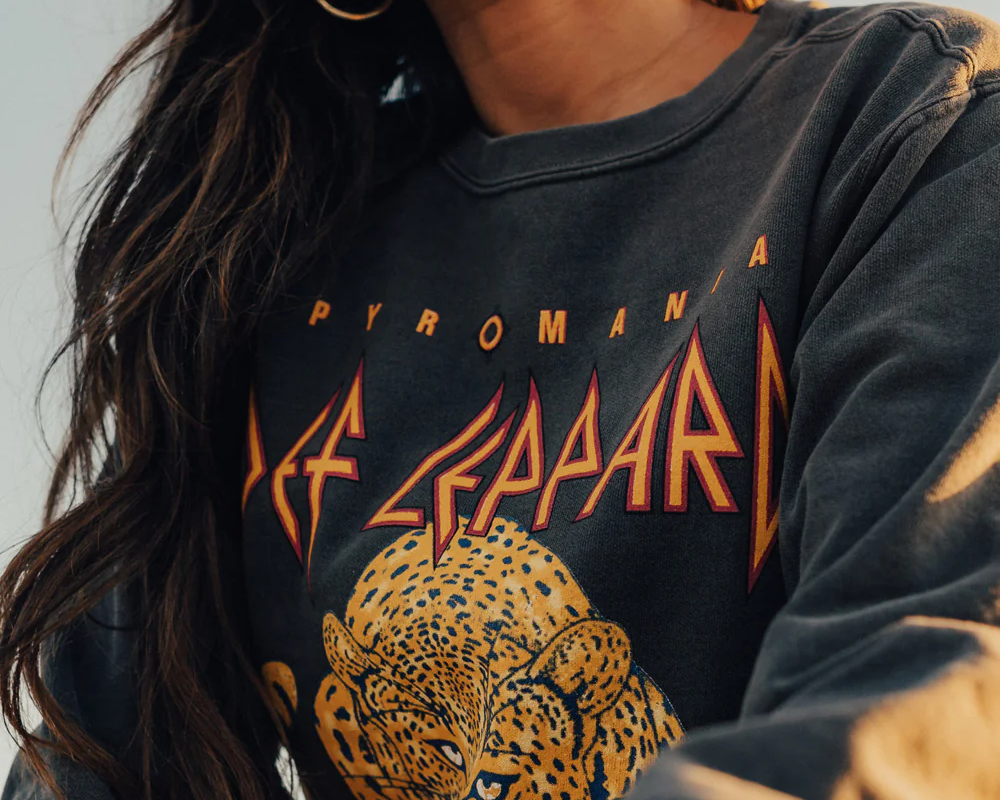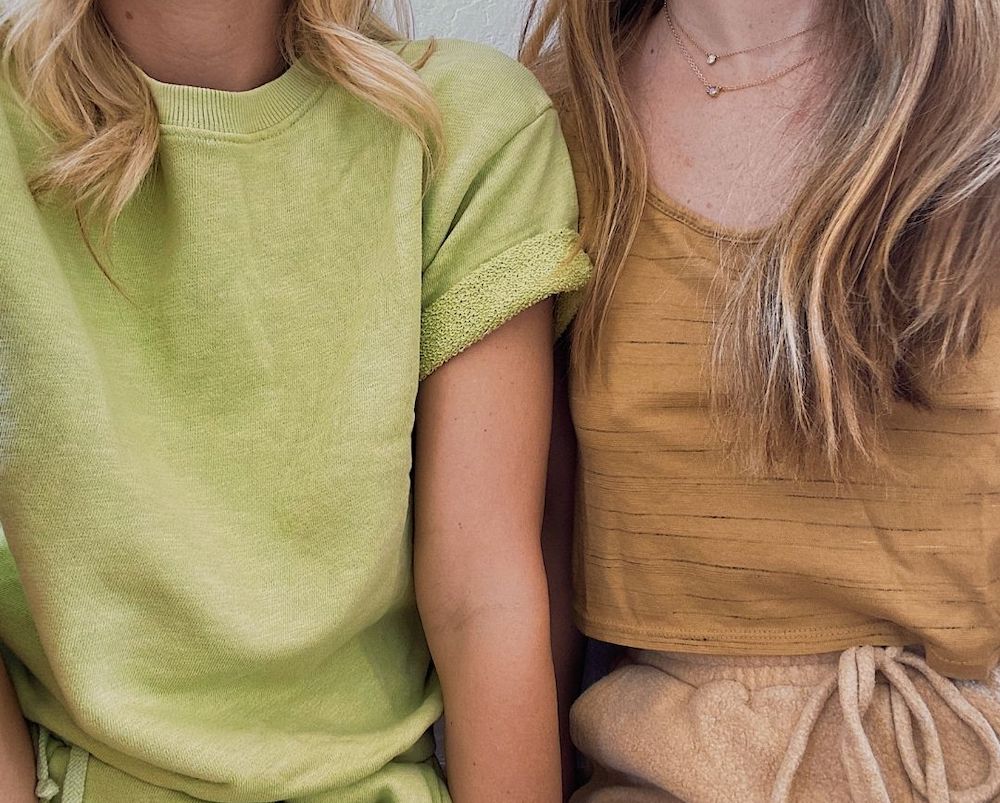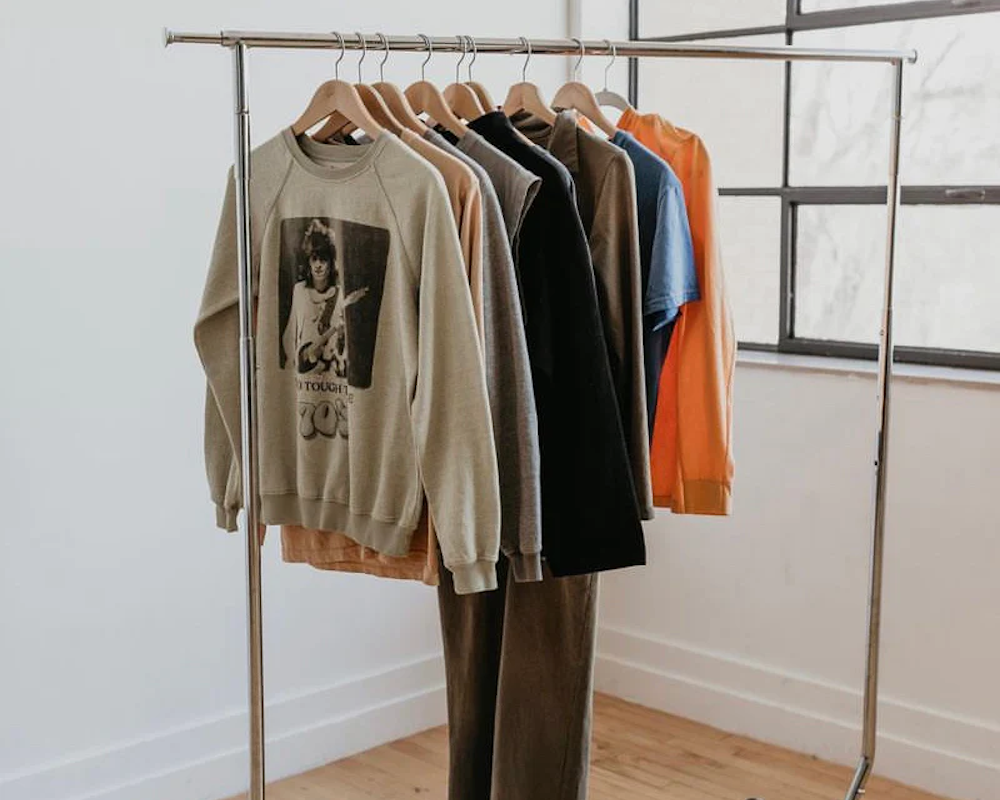In a world where the fashion industry churns out trends at lightning speed, it probably isn't a surprise that the issue of wasted fabric looms large on fashion brands everywhere.
Mountains of fabric, discarded garments, and leftover fabric fill landfills and contribute significantly to environmental degradation. Fast fashion, in particular, is facing scrutiny for its contribution to water pollution, toxic chemical use, and waste fabric.
The good news is that many of us are becoming more conscious of the fashion industry's environmental impact. There’s been a push towards sustainability and transparent supply chains – like those who choose to purchase deadstock fabrics for their garments.
At People of Leisure, a number of our pieces are made out of deadstock fabric and while we know it might not be the ultimate solution to fashion waste, we believe it's a start in the right direction.
Discover more about deadstock fabrics and how we're choosing to eliminate waste in the fashion industry.
Understanding Fabric Waste
Textile waste poses a colossal challenge in the fashion industry, leading to heaps of discarded garments filling landfills or meeting incinerators annually. In fact, less than 1% of clothing material undergoes recycling to produce new apparel. Amidst the overproduction of garments—estimated at a staggering 100 billion annually—a surplus of unused or "deadstock" fabric accumulates in production mills. Some brands (like us) opt to purchase and integrate this fabric into their designs, aiming for a more eco-friendly approach.
What is Deadstock Fabric?
Deadstock fabric refers to surplus or leftover fabric that remains unused by a fabric mill, a manufacturer, or a clothing brand. You may also have heard it referred to as 'overstock', 'remnant', or 'surplus fabric'. No matter what you call it, these fabrics often pile up due to overproduction in fabric mills, canceled orders, or changes in design requirements.
In short, deadstock fabrics are essentially excess materials that are left unused and would otherwise end up in landfills. It is, for the lack of a better term, fashion waste.
How Does Deadstock Fabric Help Us?
Deadstock fabrics offer us a sustainable alternative where we can upcycle existing materials into new garments. Not only does this help reduce our carbon footprint, but we are reusing textile waste to give it new life. And while we understand that its existence is rooted in a fractured model that thrives on overproduction (fast fashion), we believe there are still many benefits to repurposing this surplus.
Sustainability
The deadstock fabric we purchase reduces our need for new fabric production and lessens our environmental impact of textile waste. We love how deadstock fabric can be rescued and transformed into fresh designs just like our Grateful Dead Dancing Bears Crewneck Sweatshirt and Def Leppard Pyromania Oversized Long Sleeve Tee.
Unique and Limited Edition
Deadstock fabric allows us to create unique and one-of-a-kind designs for our collections. Many of our pieces that use deadstock fabrics have different washes and designs like our Def Leppard Upcycle Golden Sweatshirt and Led Zeppelin 1977 Tie Dye Sweatshirt. Others offer low-impact dyes like our Def Leppard School Sweater.
Offering Sustainable Alternatives
Upcycling deadstock fabrics can offer a sustainable alternative to natural materials used in garment production such as 100% organic cotton or hemp. Not only does this provide diversity in materials, but it allows us to create unique and practical designs.
The Challenges of Deadstock Fabrics
As we mentioned previously, we know that deadstock fabric is not the solution to the fashion industry's waste problem. It comes with its set of issues.
The growth of deadstock fabric inevitably fuels the production of more fabric leading to a surplus of discarded materials. And because deadstock fabric is not recyclable or compostable, it continues to contribute to environmental issues like pollution and textile waste. Let's also not ignore the fact that many manufacturers might intentionally produce a surplus of fabric in order to sell it at a cheaper price.
Quality issues, limited quantities, and constraints in the consistency of deadstock fabrics can also cause problems. Purchasing deadstock fabric in large quantities or in the same fabric required for a particular design can also be difficult.
Beyond Deadstock: A Holistic Approach
At People of Leisure we know that a more comprehensive approach must be taken to reduce overproduction, recycle materials, and adopt eco-friendly practices across the entire supply chain.
That's why on top of deadstock fabrics, we source 100% organic cotton and hemp for many of our new pieces including our Organic Cotton Graphic Tees. Not only does this help reduce our carbon footprint but it prevents textile waste. Not only are both of these materials biodegradable but with the right methods, they are compostable as well.
Looking Ahead: The Future of Deadstock Fabrics
While brands should be doing more to adopt a comprehensive approach that reduces overproduction and textile waste, we have to remember that it's not only brands that need to be more responsible.
Consumers play an integral role too. A shift in consumer behavior can be brought about by encouraging mindful purchases and promoting a culture of repairing, reusing, and recycling garments.
At People of Leisure, we hope to encourage conscious shopping by educating customers about the environmental and social impact of the fashion industry. With our revolt against fast fashion, we want to illustrate how wasteful consumption patterns continue to fuel this unsustainable and unethical model.
So while embracing deadstock fabric is a start, the journey toward a more sustainable fashion industry requires collective effort, innovation, and above all, a commitment to lasting change. Will you join us? We hope so.






